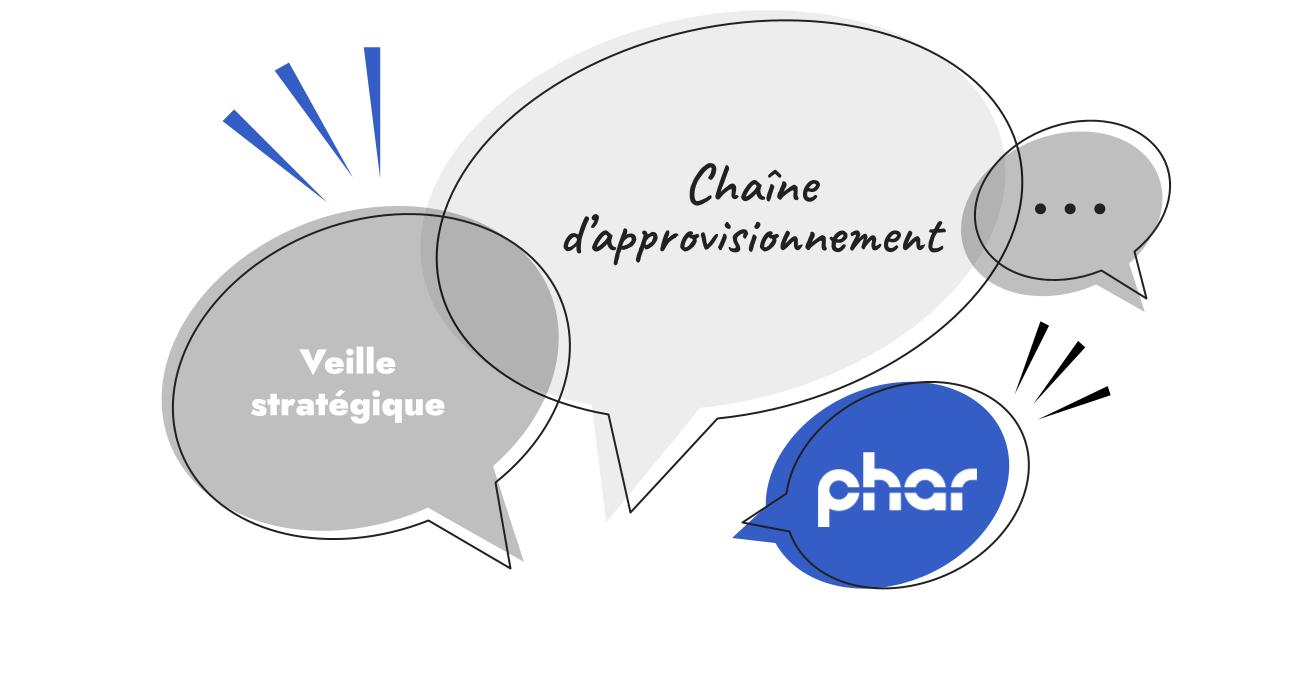The recent pandemic has highlighted the weaknesses of many companies when it comes to procurement, particularly internationally. Many have had to review their agreements and find new supply chain options, sometimes to new destinations.
This situation highlights the need not only to establish solid relationships with suppliers, but also to maintain a constant strategic watch on one's supply chain.
In fact, several central elements need to be monitored as part of a structured strategic watch:
-
The latest trends in transportation, input sourcing and inventory management:
At the same time, it's important to keep a close eye on the supply chain.
-
Whether it's about raw materials or components, each sector evolves at a particular pace when it comes to technology, but also when it comes to the provenance of certain products and services. It is therefore becoming imperative to monitor any developments on this subject and to set up systematic information gathering.
-
The following sources can help you get started setting up your supply chain intelligence system.
-
In addition, don't forget sources specific to your sector. In many fields (metal processing, construction products, etc.), specific sites exist to track any changes in raw materials, prices, etc.
-
Finally, a few sources such as Fastmarkets AMM or Madison's Lumber Reporter will make it easier for you to set up your strategic watch.
-
-
Your suppliers:
-
Each of your suppliers experiences its own business development challenges. It's important to consider whether they're adding or eliminating production capacity, and whether it's desirable to give them more responsibility in your overall supply chain.Other sources can help you identify technological alternatives eti new component suppliers.
-
If you want to find out about the financial situation of your suppliers, some sites, particularly European ones, can provide you with up-to-date information and even occasional alerts:
-
-
Your competitors' suppliers:
-
This angle, often little exploited, allows you to identify new potential sources of supply, which is not insignificant in the current context. Your competitors may have already redirected their purchasing towards the Americas or Europe, sometimes forsaking Asia. Here too, new opportunities may arise for your operations.
-
Monitoring tools here can facilitate your strategic intelligence approach :
-
-
Your logistics partners:
-
It's crucial to look at your logistics partners' latest actions. Are they expanding? Do they have labor issues that could impact your deliveries? Every company needs to regularly revisit its options in this regard, and thus make strategic supply chain decisions.
-
Many sources can be consulted on a recurring basis as part of your strategic intelligence to re-examine certain links in your international supply chain.
-
-
Regulatory and customs aspects:
-
It's also up to you to keep an eye on any legislative or tariff changes that could impact your supply chain. Many countries are raising their environmental requirements or reviewing the importance of local content. Don't be caught off guard in this respect.
-
Basic sources can help you with this:
-
Parallel to this, it's sometimes up to you to rely on more human intelligence. Regular exchanges with your forwarder and, more generally, with your business partners will enable you to adjust your supply chain focus.
-
Finally, it's important to re-emphasize the importance of sources and tools that enable you to properly carry out this strategic intelligence at the level of your supply chain. It's up to you to be ready for the next event to disrupt international trade and the global supply chain.

December 7, 2024
